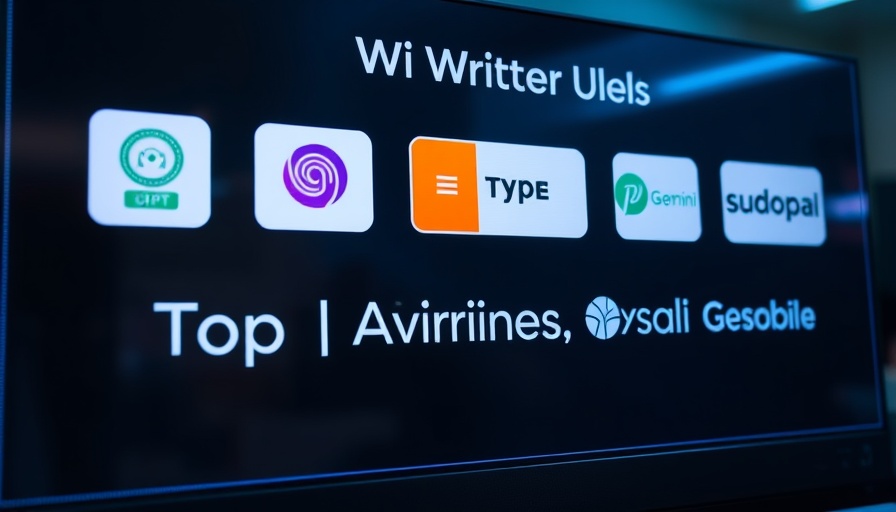
Unlocking the Full Potential of AI Writing Tools
In today's fast-paced digital world, content creation is pivotal for brands and individuals alike. As the demand for content continues to grow, so does the need for efficient writing tools that can enhance productivity and creativity. This is where AI writing tools come into play. Having tested five leading options, I found some clear winners that can significantly streamline your writing process.
What Makes AI Writing Tools So Essential?
Many writers have felt the pressures of deadlines, the need for original content, and the desire to maintain creativity. AI writing tools address these challenges efficiently. By generating ideas, suggesting revisions, and even drafting content, they allow writers to focus on what truly matters: crafting engaging stories that resonate with their readers.
Real-life Examples of AI in Action
As I explored these tools, I conducted real-world tests that included drafting blog posts, creating outlines, and revising existing text. For instance, one tool impressed me by quickly converting a rough idea into a coherent article, complete with headlines and a structured layout. This showcased how AI can enhance productivity, generating high-quality drafts in mere minutes.
The Benefits Beyond Writing Efficiency
While the primary function of these tools is to assist in writing, they also provide valuable insights into your audience and help maintain your unique voice. By analyzing tons of data, they can suggest keywords and topics that might engage your readers more effectively. This data-driven approach can enhance your content strategy, making it much more aligned with what your audience is searching for.
What I Learned From Testing Five Leading AI Tools
Among the five AI writing tools I tested, each had its strengths. One stood out for its user-friendly interface, making it perfect for beginners, while another excelled in producing long-form content that's sophisticated and nuanced. Although some tools performed better than others, the most significant lesson came from discovering that no single AI tool is perfect. Instead, blending their strengths could yield the best results for diverse writing tasks.
Future Predictions: What Lies Ahead for AI Writing?
As technology continues to advance, we can expect these tools to evolve, becoming even more adept at understanding context and producing human-like texts. The horizon is bright for AI writing tools, especially as concerns about originality and plagiarism grow. Emerging technologies will likely include sophisticated plagiarism detection and adjustments based on tone and audience feedback.
Ultimately, while AI might enhance writing capabilities, it remains essential for writers to infuse their unique perspectives and creativity into content. AI is a tool, not a replacement for the art of writing.
Taking Action: Explore Your Options!
If you're intrigued by the advantages AI writing tools offer, then now is the time to explore them. You can make your writing journey more efficient, but remember to bring your unique voice along. For a safe bet against AI detection, consider checking out Prompt2Human—it could just be what you need to take your content creation process to the next level!
 Add Row
Add Row  Add
Add 




Write A Comment